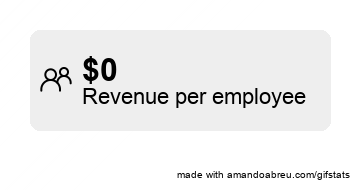Test your revenue projections with this metric
Running a successful business requires rigorous planning and realistic forecasting, particularly when it comes to revenue projections. For many startup owners, especially in the high-growth software sector, projections can often lean towards the optimistic side. These numbers are frequently shared with potential investors, and in some instances, might even resemble the famous “hockey stick” curve. But are these projections accurate, or even attainable? A crucial metric to consider in this scenario is revenue-per-employee (RPE).
Understanding Revenue-Per-Employee in High Growth Software Companies
High growth software companies often experience rapid expansion and are expected to scale significantly within a short time. This can lead to ambitious revenue forecasts, sometimes unrealistic.
One way to check the validity of your revenue projections is to use the revenue-per-employee metric. This metric allows businesses to assess how much revenue each employee contributes to the company. By dividing your revenue by the number of employees, you can gauge whether your projections are in line with industry standards.
The Pitfall in Projections

Imagine you are projecting that you will make $100 million/year within 6 years, but the same projections show only 10 employees. In this scenario, you expect to make $10 million per employee. Unfortunately, this number is probably not attainable, and thus it can be a sign that your projections are off.
Benchmarking Revenue-Per-Employee Metric
To ensure that your revenue-per-employee projections are realistic, it can be helpful to benchmark against other companies in similar industries. Here are the revenue-per-employee metrics for six different companies:
- Google (Alphabet Inc.):
- Revenue per Employee: $1.35 million
- Number of Employees: Approximately 156,500
- Microsoft:
- Revenue per Employee: $781,000
- Number of Employees: Approximately 181,000
- Facebook (Meta Platforms):
- Revenue per Employee: $1.41 million
- Number of Employees: Approximately 58,604
- Salesforce:
- Revenue per Employee: $490,000
- Number of Employees: Approximately 49,000
- Adobe Systems:
- Revenue per Employee: $403,000
- Number of Employees: Approximately 22,635
- Slack Technologies:
- Revenue per Employee: $384,000
- Number of Employees: Approximately 2,500

The Importance of Revenue-Per-Employee in Cost Projections
Using the revenue-per-employee metric is not only vital for revenue projections but also essential for projecting costs, especially salaries. Assume a very conservative revenue-per-employee, such as $100k. So, if you project $100 million per year in revenue, you would project salaries for $100 million/$100k = 1000 employees. This realistic approach helps in aligning the financial strategy with human resources, ensuring that your cost structure and hiring plans are in line with your projected revenue.
It will also significantly cut into your profit margins and will help you judge whether what you want to do is even feasible.
Conclusion
Testing your revenue projections against a straightforward and useful metric like revenue-per-employee can save your high growth software company from over-promising and under-delivering. It creates a foundation for realistic growth plans and ensures that you are more likely to meet or exceed the expectations of your stakeholders, including investors, and most importantly, yourself!
By comparing your figures with those of established industry players, you can set achievable targets and align your hiring plans accordingly.
This ultimately leads to a more transparent, effective, and responsible planning process, allowing you to focus on what’s essential: building a successful, scalable business, grounded in reality.
I offer fractional CTO services for businesses like yours. I can even work alongside your current CTO, and transfer key knowledge onto your existing team. If you have hard problems you want to tackle but feel your organization lacks the perspective to tackle fully, get in touch! I guarantee to ask very hard questions that lead to solving hard problems.